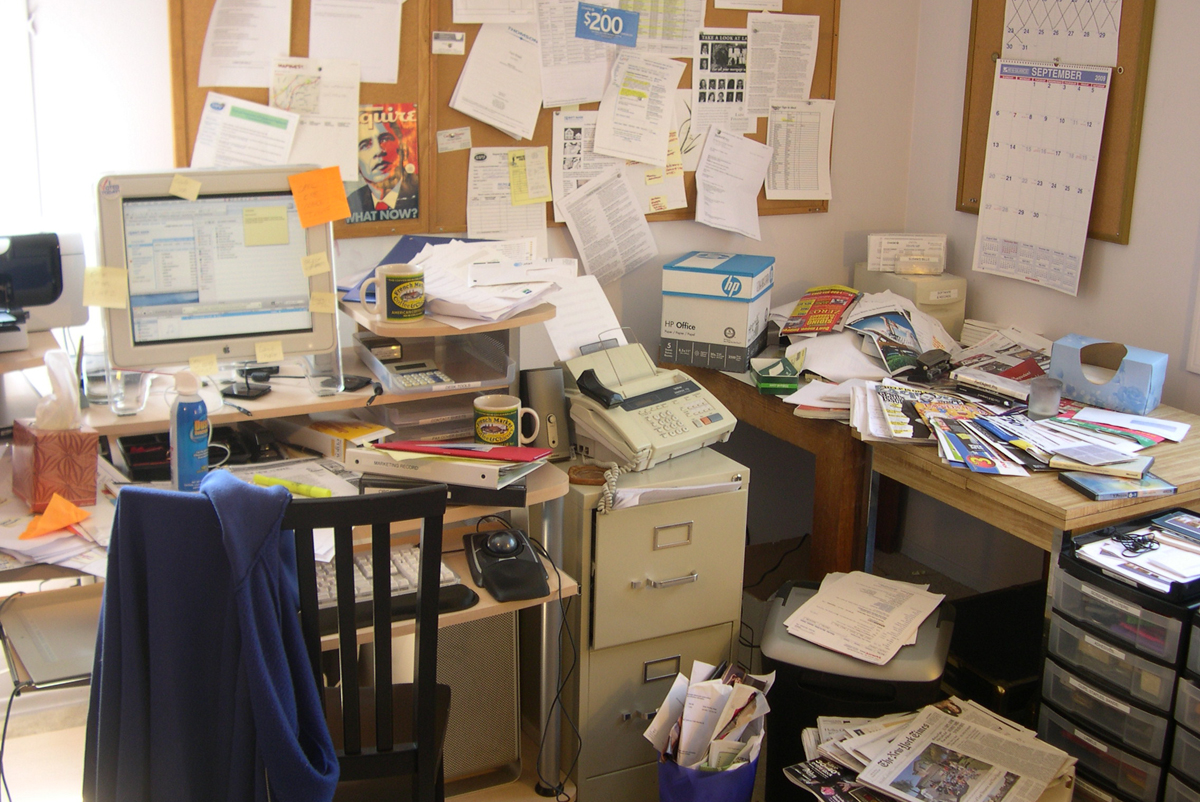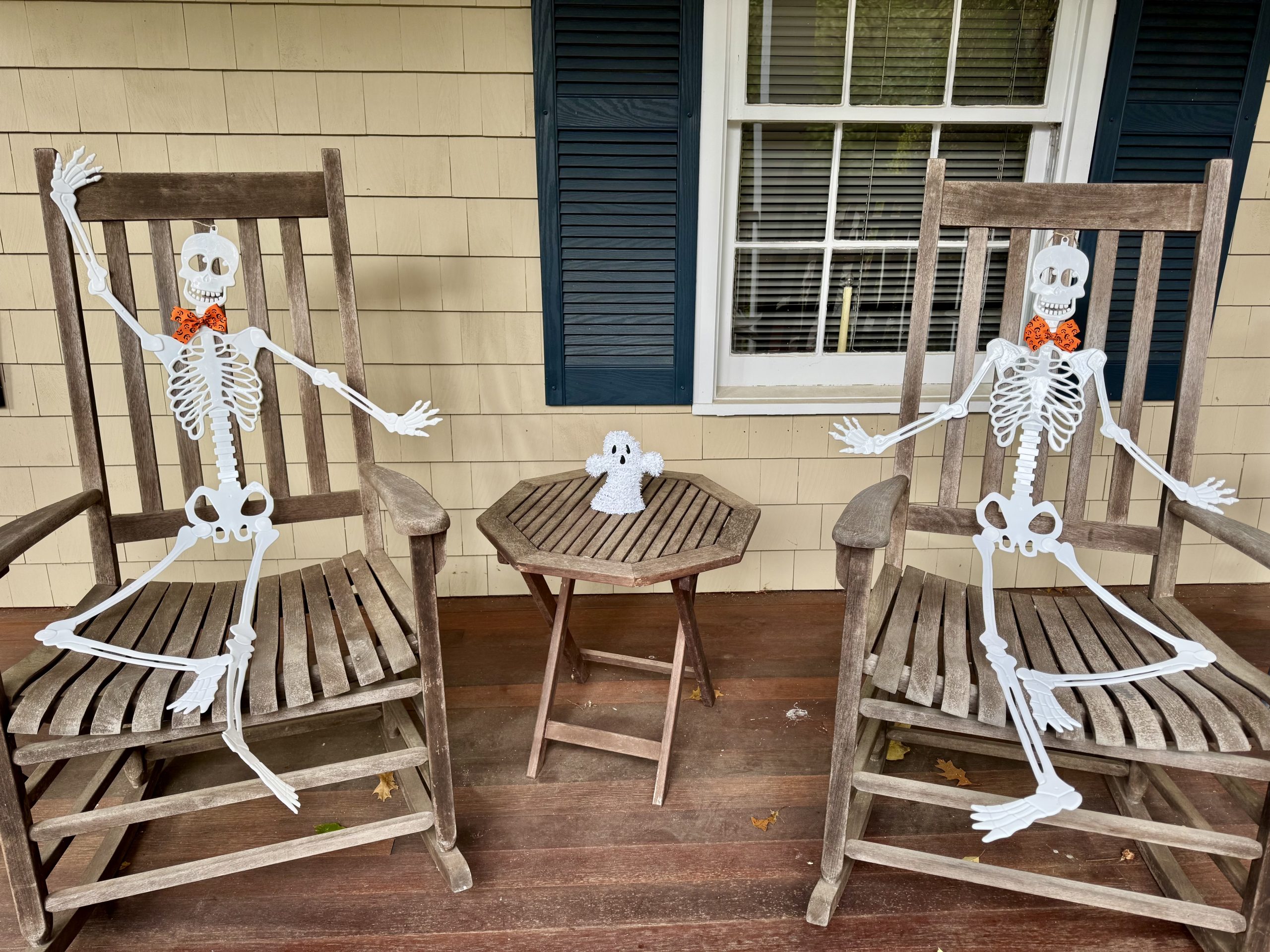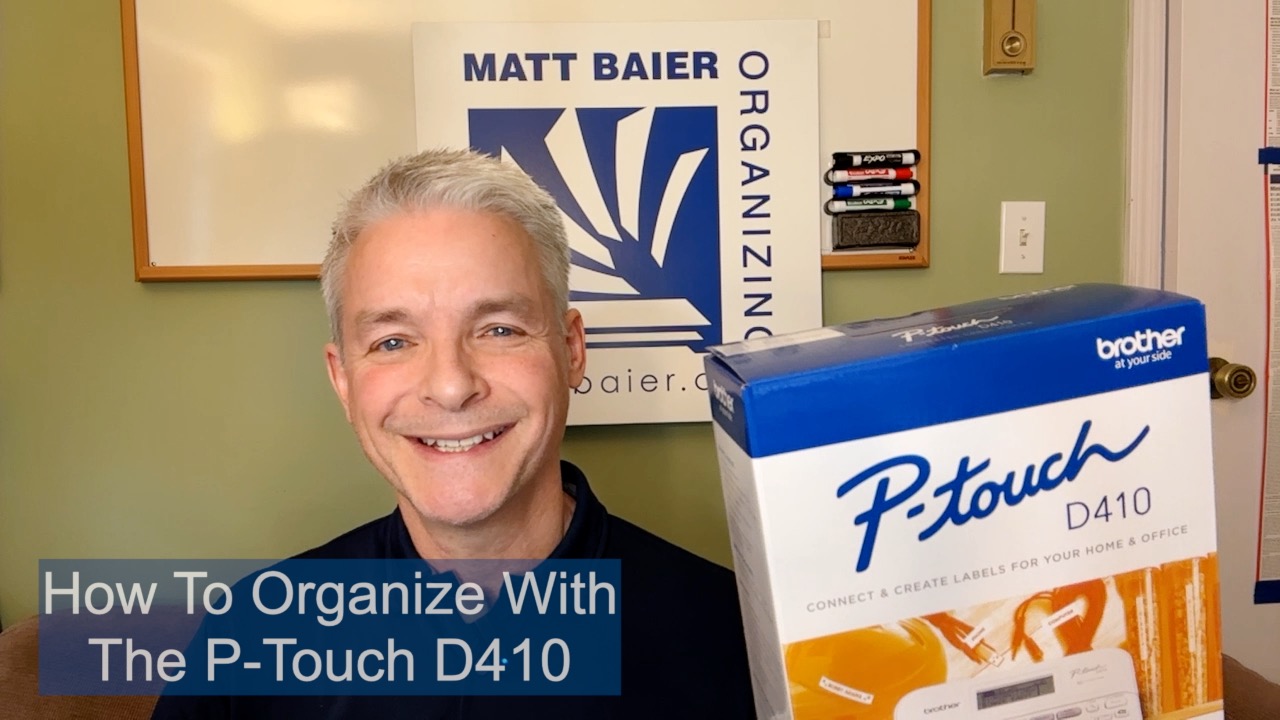Are you working from home more these days? Are you finding it hard to get things done in your home office? Is it getting out of control, and you don’t where to begin? If you’ve tried to get organized before and the clutter keeps coming back, then read on, as I give step-by-step instruction for organizing success.
Step 1 – Get the right tools
OK, so I’m not talking about organizing supplies here. In fact, do NOT get organizing supplies until after reading this. What I’m talking about are processing tools. You will need:
- A clear work surface – now I know you have a desk in your home office, but you’ll also need this as a decluttering tool
- Ten pack of banker boxes for sorting – they are a great size, come with lids, and are stackable which saves space
- Retractable Sharpie – never lose a lid
- Post-It Notes super sticky variety
- Quart-size Ziploc bags
- Gallon-size Ziploc bags
Step 2 – Set the Stage
If you’ve got the space, set your decluttering stage outside your office. Your table should be in the middle, and nothing should be stored on it. On one side set up a generous trash bin, recycling bin, and shred box.
To keep the process easy, print out Zone Signs. Click on this link to print these out. Use a Review sign for items to review, and a Keep sign for items you’re definitely keeping. Strangely helpful is the Empty sign for all empty vessels. Place an Exit sign near your door for items heading out.
Step 3 – Plan of Attack
Address clutter in the following order:
- Floors
- Surfaces
- Shelves
- Cabinets/Drawers
Why? Because done in this order, each stage will make the next stage easier.
Step 4 – Sort like with like
This may feel counter intuitive, but trust me, this also makes the next stage easier. Using the Sharpie and Sticky Notes, label the banker boxes with super general categories so you can sort fast. For example: Reference, Office Supplies, Electronics, Keepsakes, Decor, and Loose Paper. Gather items throughout your office and place them in the appropriately labeled boxes. Use the Ziploc bags to place smaller loose items in, before placing them in the box.
Keep an Elsewhere box for items that don’t belong in your office. Do not distribute it while you are sorting, or you may get distracted in the other room. When done, place the boxes in your Review zone.
Step 5 – Prioritize
We’re finally at the point where you start decluttering. Bring items from your Review zone to your table, one category at a time, so you can look at it in context. Context drives decisions. For example, when you are looking at electronics, you are in electronics mode. Use your table as a tool to spread out and sub-sort.
You have more options than just keep or toss. You can donate, sell, give-to, or just store more remotely. But nothing goes back to the Review zone. Depending on the amount of clutter in your office, you may want to review items from the floors and surfaces first, then set up another review for the shelves and drawers.
Step 6 – Circulate Paper
Circulation is the subject of my book, The Circulation Solution. That is the key to staying organized; but to get organized it starts by a simple sort by stage. By the way you should always review the largest category last, and in the home office that category is paper. Saving it for last gives you more focus and more space to process.
When you’re down to decluttering just paper, you will need four boxes:
- Box one is for Running files. Paperwork you need to make a point of acting on.
- Box two is for Sitting files. Files you need to be able to find reliably.
- Box three is for Sleeping files. Paperwork that you are keeping just in case. This is probably the most important stage to recognize because you can store these more remotely. That can free up a ton of space.
- Box 4 is for Dead files. Files to shred. If you’re not 100% sure you want to shred something, just get your paper into one of the other bins for now.
The most important thing at this stage is to sort fast. Focus more on the dates than on content. I know there is a school of thought that says “only handle a piece of paper once.” I say when you’ve got a lot of paper, forget that rule, because it can slow you down. The speed at which you process matters because momentum makes magic. Once you do this basic sort, then you can focus on each stage, one at a time. You can focus on content, declutter further, and when you have a singular focus, you can move faster.
Where the reduced contents should go in your home office is covered in my video “Celebrate National Clean Off Your Desk Day Every Day.” To understand what happens with the four stages of paper, check out my “Paper Organizing” Video.
I’d love to hear your thoughts and comments below!
Please Share With Your Community
















